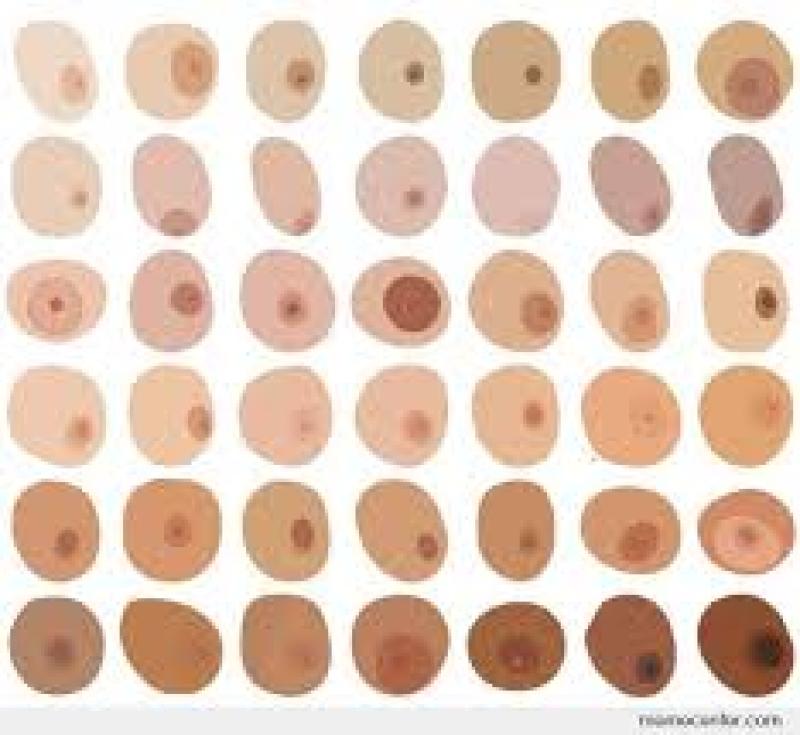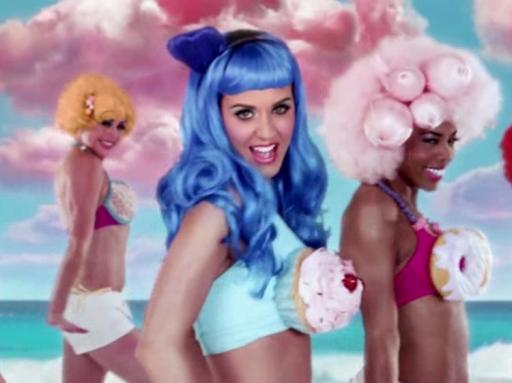Here's what the size of your nipples really means


- Everyone has a differently-shaped areola — AKA the pigmented skin that surrounds the nipple.
- Genetics has the biggest role in determining the size, appearance, and color of the areola.
- Puberty, periods, and pregnancy can also change the appearance of the areola over time.
- A nipple's appearance can also be altered with plastic surgery.
Quarters. Dinner plates. Pancakes. Pepperoni. These are some of the creative items people have used to describe the size of the pigmented skin surrounding the nipple , aka the areola. Everyone with nipples has areola — it just comes with the territory. But why are some people in the quarter size range while others are much larger?
The not shocking truth is that everyone's nipples are a different size , and that's perfectly fine. "The areola are as variable as the breast that they're on," says Katharine O'Connell White , MD, MPH, director, Fellowship in Family Planning, department of OB-GYN at Boston University, Boston Medical Center. That means, in terms of size and shape, there's a very wide range of what is "normal" for areola. So, what determines the size of someone's areola ? "Genetics has the biggest role in both the size, appearance, and even color of the areola," Dr. White says. Areola size is something that you inherit from your parents, just like your breast and foot size, or your freckle pattern.
That said, there are a few factors that can change the size, color, and shape of your areola over time, like puberty, periods , and of course, pregnancy. "When you think about what [areola] are used for, it makes sense that they might get larger and darker," Dr. White says. Areola aren't just accessories for your nipples; they actually serve a function.
Areola have tissue and fiber that contracts so that nipples can get erect when you're chilly, aroused, or breastfeeding, Dr. White says. If you're breastfeeding, then your areola grow as they get ready to help with lactation, and change color because they're needed more than ever, she says. The areolas act as a "bullseye" for a baby to find your breast and get milk. "Babies have horrible eyesight, so the stark contrast between the areola and the color of the breast helps focus the baby's eyes on where to look," she says.
Not all nipples are created equal — and that's a good thing. Capitol Records
- Everyone has a differently-shaped areola — AKA the pigmented skin that surrounds the nipple.
- Genetics has the biggest role in determining the size, appearance, and color of the areola.
- Puberty, periods, and pregnancy can also change the appearance of the areola over time.
- A nipple's appearance can also be altered with plastic surgery.

Quarters. Dinner plates. Pancakes. Pepperoni. These are some of the creative items people have used to describe the size of the pigmented skin surrounding the nipple , aka the areola. Everyone with nipples has areola — it just comes with the territory. But why are some people in the quarter size range while others are much larger?
The not shocking truth is that everyone's nipples are a different size , and that's perfectly fine. "The areola are as variable as the breast that they're on," says Katharine O'Connell White , MD, MPH, director, Fellowship in Family Planning, department of OB-GYN at Boston University, Boston Medical Center. That means, in terms of size and shape, there's a very wide range of what is "normal" for areola. So, what determines the size of someone's areola ? "Genetics has the biggest role in both the size, appearance, and even color of the areola," Dr. White says. Areola size is something that you inherit from your parents, just like your breast and foot size, or your freckle pattern.
That said, there are a few factors that can change the size, color, and shape of your areola over time, like puberty, periods , and of course, pregnancy. "When you think about what [areola] are used for, it makes sense that they might get larger and darker," Dr. White says. Areola aren't just accessories for your nipples; they actually serve a function.
Areola have tissue and fiber that contracts so that nipples can get erect when you're chilly, aroused, or breastfeeding, Dr. White says. If you're breastfeeding, then your areola grow as they get ready to help with lactation, and change color because they're needed more than ever, she says. The areolas act as a "bullseye" for a baby to find your breast and get milk. "Babies have horrible eyesight, so the stark contrast between the areola and the color of the breast helps focus the baby's eyes on where to look," she says.
Some people do feel strongly about their changed nipples, though, and nipple augmentation has become increasingly popular, particularly with people who just gave birth. T.Y. Steven Ip , MD, a plastic surgeon who specializes in breast augmentation, told Refinery29 that about 50% of postpartum patients who come to seek a breast lift or augmentation also request that he change their nipple or areola . Some patients who haven't had kids also ask for nipple augmentation, although it's less common.
At the end of the day, you may do whatever you damn well please with your nipples, but Dr. White says these procedures are unnecessary from a medical perspective. "There is absolutely nothing wrong with your areola, whether you've been pregnant or not — it's just a part of who you are, and it's what makes all of us different," she says. "Beauty is the variety of what human bodies can look like."
http://www.businessinsider.com/what-does-my-nipple-areola-size-shape-mean-2018-3




Reminds me of the neighborhood burnout bully when I was a kid. He would walk around with his shirt off, and his nipples were ridiculously large. They looked like saucers.
Funny topic for Business insider..
All I can say is if you like your nipples, don't breast feed, LOL. They will never be the same.